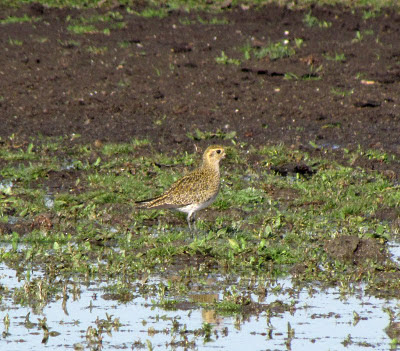It's been a good year on the Meadow with a record breaking 137 on the year list. It's been a good year for rarities with spoonbill, pectoral sandpiper and white stork all being seen this year. The floods lasted until June and then restarted in the autumn so unfortunately we missed the prime return passage but you can't have everything. Bird of the year has to be the white stork which put in a very brief five minute appearance on the Meadow and was unfortunately seen just by a few lucky observers.
Meadow Bird of the Year - the White Stork
Below is the summary list for the year. Let's hope that next year is as good, or even better.
Birds of Note 2011
Waders: redshank, lapwing, golden plover, dunlin, black-tailed godwit, ruff, curlew, oystercatcher, ringed plover, little ringed plover, greenshank, common sandpiper, green sandpiper, wood sandpiper, grey plover, bar-tailed godwit, whimbrel, sanderling, SPOONBILL, litte stint, PECTORAL SANDPIPER, avocet
Water Fowl: wigeon, teal, shoveler, pintail, tufted duck, pochard, goosander, shelduck, goosander, red-breasted merganser, brent goose, garganey, white-fronted goose
Gulls/Terns: yellow-legged gull, Caspian gull, Glaucous Gull, Mediterranean gull, Little Gull, Iceland Gull, Black Tern, + usual commoner gulls & terns
Misc. Others: yellowhammer, brambling, nuthatch, waxwing, raven, lesser redpoll, tree sparrow, grey wagtail, kingfisher, redstart, wheatear, whinchat, yellow wagtail, channel wagtail, blue-headed wagtail, WHITE STORK, nightingale, cuckoo, spotted flycatcher, marsh tit
Birds of Prey: peregrine, buzzard, red kite, sparrowhawk, kestrel, tawny owl, osprey, hobby
Warblers: blackcap, garden warbler, chiffchaff, willow warbler, whitethroat, lesser whitethroat, sedge warbler, reed warbler, grasshopper warbler













































